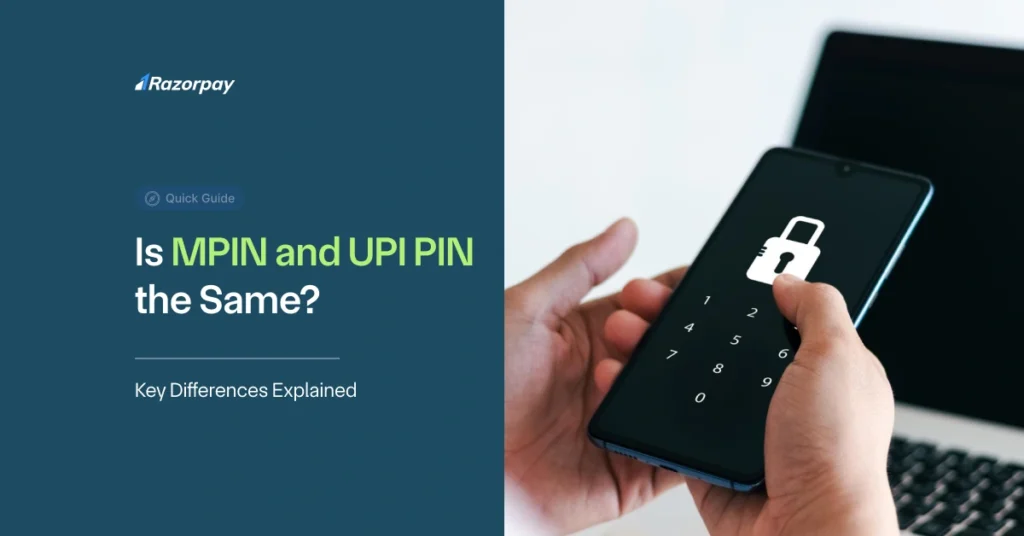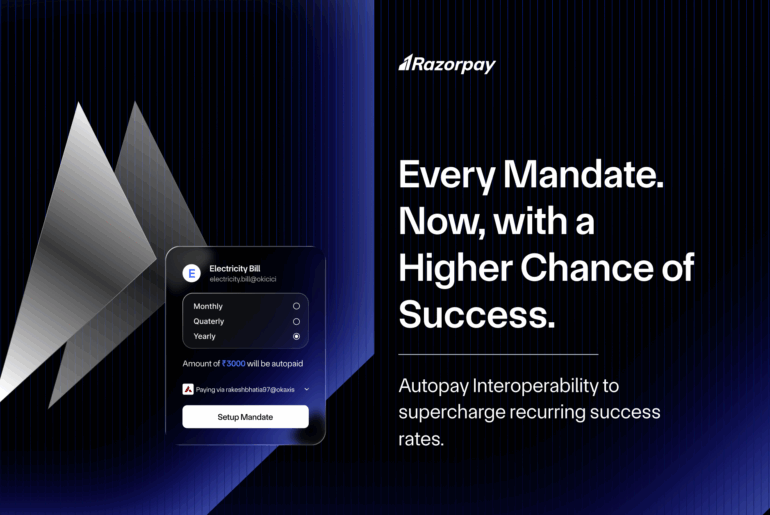Think MPIN and UPI PIN are just two names for the same thing? Think again.
In the world of digital payments, these tiny numbers play a big role—but they do it in very different ways.
As mobile banking and digital payments grow in popularity, so does the need for secure access and transaction authentication. That’s where MPIN and UPI PIN come into play. While these terms may sound similar, many users often wonder: Is MPIN and UPI PIN the Same? The truth is, they serve very different purposes and are essential to keeping your mobile banking and UPI transactions safe.
In this blog, we’ll break down the difference between MPIN and UPI PIN, explain how each one works, and walk you through how to generate an MPIN securely. Let’s clear the confusion once and for all.
Table of Contents
Difference Between MPIN and UPI PIN
Both MPIN and UPI PIN are used to authenticate banking activities, but they are not the same.
What is an MPIN?
MPIN (Mobile Personal Identification Number) is a 4- or 6-digit passcode used to log in to your mobile banking app. Think of it as your ATM PIN, but for mobile banking. It’s issued by your bank and is required every time you open your bank’s app or perform certain operations like balance checks or fund transfers within the app.
What is a UPI PIN?
UPI PIN (Unified Payments Interface PIN) is a 4- or 6-digit number set by you to authorise UPI transactions. This is the PIN you enter when sending money or making payments via UPI apps like Google Pay, PhonePe, Paytm, or Razorpay-powered apps.
So, is MPIN and UPI PIN same?
No. They are not the same, even though both are used for banking security. The key difference lies in where and how each is used.
Key Differences Between MPIN and UPI PIN
Here’s a quick comparison to help you understand the difference better:
Feature |
MPIN |
UPI PIN |
| Full Form | Mobile Personal Identification Number | Unified Payments Interface PIN |
| Purpose | Used to log in to mobile banking apps | Used to authorise UPI transactions |
| Where it’s Used | Banking apps (e.g., SBI, HDFC Mobile Banking) | UPI apps (e.g., Google Pay, PhonePe, Paytm) |
| Set By | Set or generated via your bank’s mobile app | Set via your UPI app during registration |
| Usage | Accessing the account, checking the balance, and making fund transfers | Making UPI payments, sending or receiving money |
| Linked to | Your bank account | Your UPI ID and linked bank account |
| Mandatory For | Mobile banking | UPI transactions only |
How to Generate an MPIN?
If you’re new to mobile banking or haven’t set up your MPIN yet, here’s a step-by-step guide to help you get started. It’s simple, quick, and ensures your banking app remains secure.
1. Download and Open Your Banking App
Go to the Play Store or App Store, search for your bank’s official app (e.g., ICICI iMobile, Axis Bank Mobile App), and install it.
2. Set Up Your MPIN
After registering with your mobile number and verifying it via OTP, you’ll be prompted to create an MPIN. Choose a 4 or 6-digit number that you can remember easily.
3. Confirm Your MPIN
Re-enter the same number to confirm it. This will be your primary login credential for mobile banking going forward.
4. Secure Your MPIN
Treat your MPIN like an ATM PIN—never share it. Don’t write it down or use obvious numbers like your birthdate. If you ever suspect misuse, change it immediately via your app settings.
Conclusion
To sum it up, MPIN and UPI PIN are not the same, but both play a critical role in your digital banking experience.
- MPIN secures your access to mobile banking apps.
- UPI PIN authorises your UPI-based payments.
Understanding their roles and keeping both secure ensures safer and smoother banking and payment experiences.
Looking to simplify your payments even further? Check out UPI ATM Cash Withdrawal options that let you withdraw cash without a card using just your UPI PIN.
Frequently Asked Questions (FAQs):
1. Is it safe to share my MPIN or UPI PIN?
No, never. Both MPIN and UPI PIN are confidential. Sharing them can lead to unauthorised access or fraudulent transactions.
2. What happens if I enter an incorrect MPIN or UPI PIN multiple times?
After multiple incorrect attempts, your access may be temporarily blocked for security reasons. You may need to reset your MPIN or UPI PIN via your bank or UPI app.
3. Is it safe to use the same number for MPIN and UPI PIN?
Technically, it’s possible, but not recommended. Using different PINs adds an extra layer of security to your mobile and UPI transactions.
4. What should I do if I forget my MPIN or UPI PIN?
You can reset your MPIN via your bank’s mobile app or reset your UPI PIN through your UPI app by verifying with your registered mobile number and debit card details.



